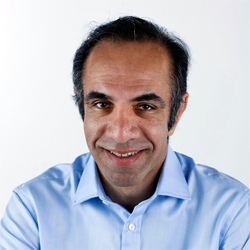LEARN FROM GENERALS OF THE MARKETS – PART 24

“One of the great things about the market is that if you’re a naturally inquisitive person, you’ll never run out of opportunities to learn.” – Brian Shannon
Philip Arthur Fisher lived from September 8, 1907 until March 11, 2004. After dropping out of Stanford Graduate School of Business, he worked as an analyst at the Anglo-London Bank, San Francisco. Then he had a short stint at a stock exchange office and later started his own fund management firm (Fisher & Co.) in 1931. He made uncommon and marvelous speculative profits for his investors. Philip was a very reserved soul; rarely granting audience to the press. He was also very choosy about those whose money he managed. But when his first book titled “Common Stocks and Uncommon Profits” was released in 1958. The book catapulted him to the ranks of the market wizards and a status of being one of the best traders of all time. Later he released another books titled “Conservative Investors Sleep Well” in 1975, and “Developing an Investment Philosophy” in 1980. He was very good at making in-depth research on the companies he was interested in. He was a pioneer of growth investing. Philip got many great followers, including Warren Buffett.
Lessons:
Here are some of the lessons you can learn from Philip:
1. Philip Arthur Fisher was a soldier of the financial markets. He was a market veteran with more than 70 years of experience. He died as a hero of the financial markets. Are you a soldier on the battlefield of the financial markets? Are you a successful soldier? Is trading your passion of a lifetime? If you didn’t have this thought in mind. You’d better start cultivating it now. Trading is a wonderful experience and a fantastic way of life – something that will eventually bring you your desired financial freedom if you don’t relent.
2. Philip was a very private man. Nevertheless, his trading and investing prowess eventually brought him to limelight. Please concentrate on developing your trading skills; endeavoring to be the best trader you can be. Ultimately, your skills shall make you a famous and a sought-after genius. You’ll eventually join the ranks of the celebrated market wizards.
3. Philip was a position trader. A position trader is a trend follower who holds his trades for a long period of time. Do you have the patience and the discipline to open orders and hold them for as long as the trend is valid? As a Forex trader, if you’d sold the GBPCHF since July 2007 and held it till now, you’d have gained far more than 10,000 pips on that single trade. If you’d bought the EURUSD at the beginning of the year 2001 and held it until the beginning of the year 2007, you’d have gained more than 7300 pips on that trade alone. If you’d shorted the EURAUD from the beginning of 2009 and held till now, you’d have gained more than 7000 pips as profits on the position. If EURZND had been sold (at the same time the EURAUD was sold) and held till now, you’d have gained far more than 9000 pips on that. There are far bigger profits to be made by riding the primary trends for as long as they last, but, unfortunately, most of us don’t have the patience and discipline to do this. Philip invested in good companies with highly encouraging facts and figures, and he attained enviable goals in the markets (excellent profits). For example, he went long on Motorola in 1955 and he held onto that till he breathed his last (at the age of 96).
4. How did Philip select the stocks he would invest in? He gathered as much information as possible on a company. This technique was highly invaluable to him. According to him, there are 15 points to look for in a market, and some of them are quality management and good business characteristics, adaptability, conservative accountability, good personnel management and relations… great sales strategies, ongoing research and products development, encouraging returns, and so on (All these points can’t be mentioned here). One thing that Fisher rarely did was to sell his stocks. He was a permabull: a style that’s no longer suitable for today’s markets. He once said that the best time to sell a stock was “almost never”. On the contrary, I’d say that the best time to sell anything is when it’s completely clear that the bullish trend has ended and the bearish trend has been fully confirmed (for position traders).
5. According to Philip, what you refuse to do in the markets is as crucial as what you elect to do. There are things you oughtn’t to do as a trader/investor. For example, he said you shouldn’t overstress diversification and that you shouldn’t follow the crowd.
6. I’d like to mention with interest, the title of his 2nd book (Conservative Investors Sleep Well). It’s possible to trade with peace of mind and sleep soundly when you’ve open positions in the markets. If I know that only 0.5% of my account is at stake, I’ll be able to sleep well. But if about 40% of the account is at stake, I won’t be able to sleep well. The same thing is true when only 5% of an account is being risked as compared to when about 75% of an account is being risked. That’s one of the reasons why I recommend very small position sizing, coupled with other basic risk control tools.
Conclusion: Is anything standing in your way, hindering you from achieving success in the markets? Those who give up after encountering a challenge are feeble-hearted. Do you have a problem pulling out consistent profits from the markets? If the problem isn’t identified, you might end up blaming the wrong person. Never let the fear of the unknown to hinder the benefits you can derive from trading. The unknown have brought millions and billions of dollars in profits to many traders. That’s why risk control is one of those things you must embrace in the markets. Nothing can give you confidence of safety and security in the midst of risk as much as conservative risk control.
A quote from Philip ends this article:
“The stock market is filled with individuals who know the price of everything, but the value of nothing.”


 Hot Features
Hot Features













